Watch YouTube video: How do praying mantises control insect pests?
Praying Mantis
Praying mantises are well known predators of many insect pests and their life stages. Mantids are called praying mantises because while resting they hold their modified pair of forelegs together in such a way that they look like they are praying (Photo 1). There are over 2000 species of mantises found in gardens, nurseries, farms and forests where they munch on different kinds of insect pests. Mantids are also known to feed on spiders, small lizards or frogs.
Biological Control Agent
However only one species (Tenodera aridifolia) is commercially available as biological control agents for controlling different insect pests of various crops grown in the home gardens and fields.
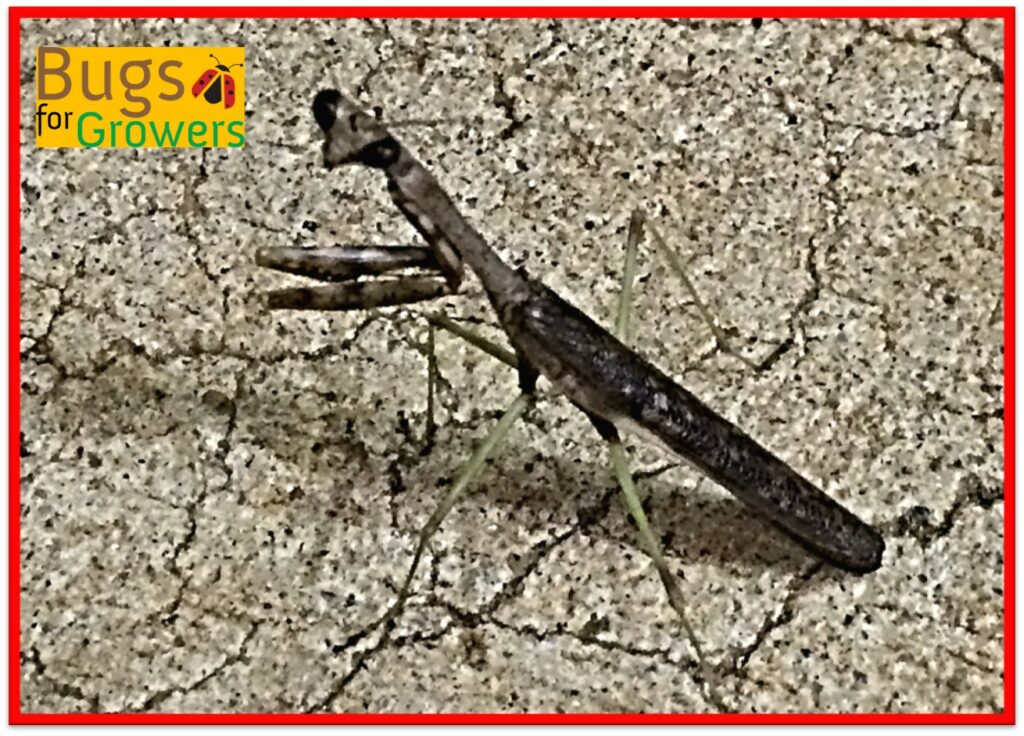
Identification
Adult mantises are about 2- 6 inches long with a narrow body and greenish to brownish in color. They are also known to camouflage with vegetation (green mantis) or surroundings to mislead their victims and protect themselves from their natural enemies (Photo 1 and 2).
Mantids have triangular heads with two large compound eyes with a highly developed sight (Photo 1). Also, they have flexible necks that they can rotate in 1800 to search of their prey. Forelegs have raptorial claws that they use for capturing and holding their prey while feeding on them.
Adults have two pairs of wings that they hardly use for flying. Mantises lay eggs in a case called ootheca that is attached to small branches of trees. Eggs are protected during harsh winter weather conditions. Young nymphs resemble their parents.
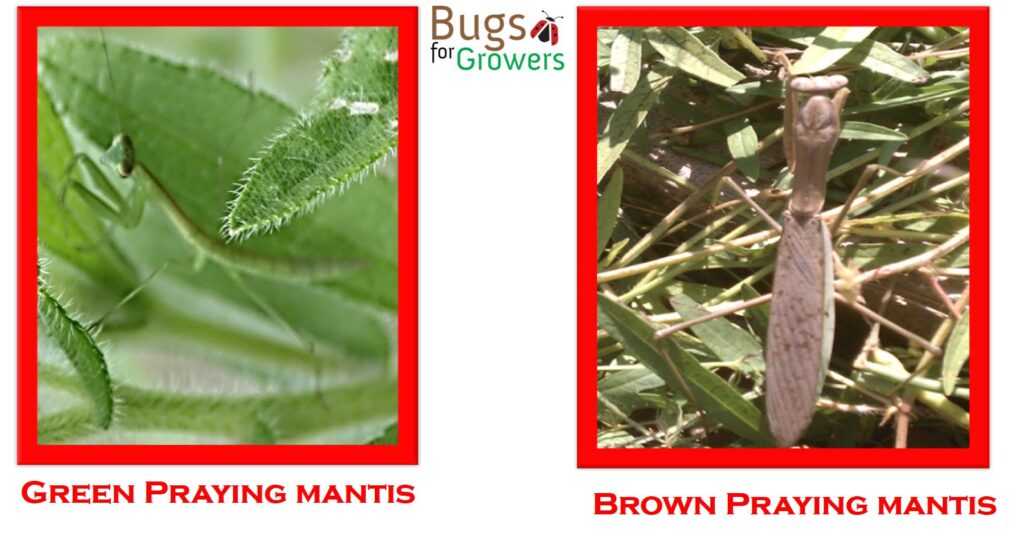
Life cycle
The life cycle of mantids consists of three life stages including adults, eggs and nymphs (Photo 3). During fall, females lay between 100 to 400 eggs in a cluster with liquidy substance that hardens to a protective case called ootheca, which remains attached to the twigs or small tree branches during winter.
Ootheca protects eggs from harsh winter conditions. These eggs hatch into small nymphs when weather starts warming up in early spring. Newly hatched nymphs try to feed each other but as soon as they disperse from ootheca, they will start feeding on other soft- bodied insects like moths, grasshoppers, mites, aphids, larvae and caterpillars.
While feeding, nymphs will develop through 6- 7 stages/ instars before becoming adults. Adults survive throughout the summer and mate. While mating, females will feed on males then lay eggs during fall as an overwintering stage. Eggs will hatch early in the spring and their life cycle will continue. Thus, praying mantises can complete only one generation in a growing season (Photo 4).
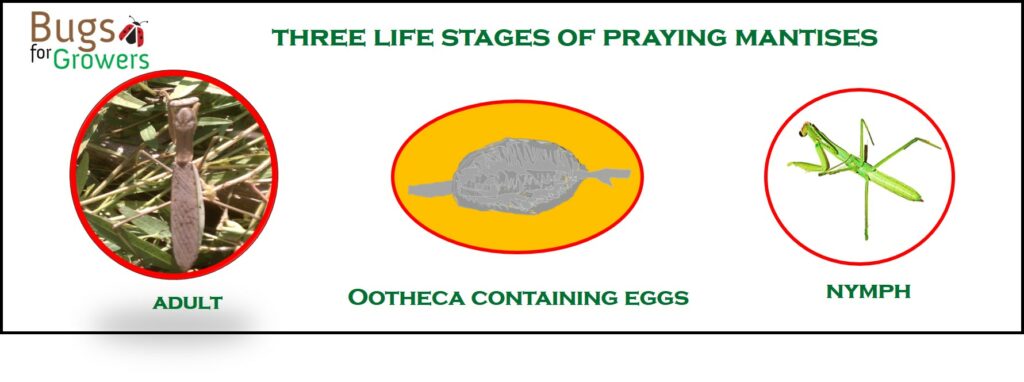
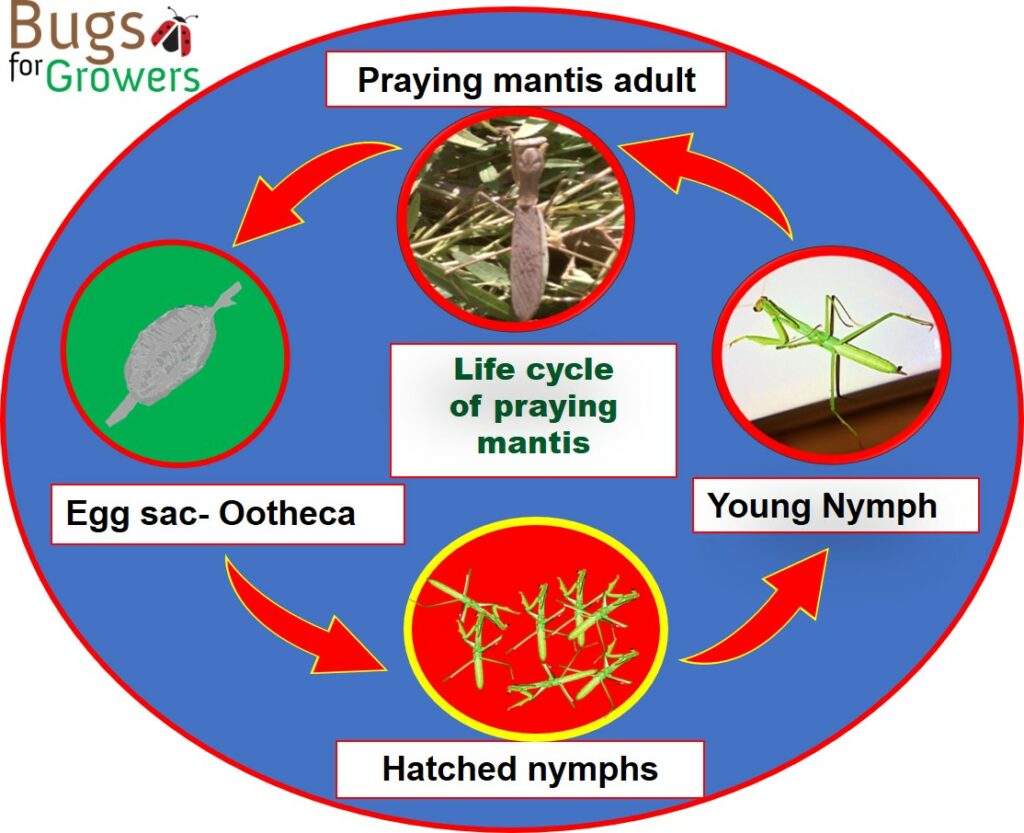
How do Mantids Control Insect Pests?
Mantises are very fast predators and known to capture different types of insects using their modified raptorial foreleg claws and feed on them using strong mandibles. Mantises have an ambush type of feeding behavior in which they sit and wait for their prey to come by. Once prey is in their reach, they can turn their flexible neck in 1800, quickly grab passing insect prey with their spiny foreleg claws and munch on it.
They are also known to camouflage with vegetation or surroundings to mislead their victims. Both the nymphs and adults of mantids directly feed on crop pests like aphids, beetles, crickets, grasshoppers, mites, crane flies, moths, butterflies and their larvae, caterpillars, grubs or nymphs.
Therefore, these dead insect pests will not produce future generations of insect pests and that is how mantids control insect pests (Photo 5 and 6). Mantids are most effective against moths because they are active like them during the night. Another important advantage is that can also feed on mosquitoes that are know do spread human diseases (Photo 7).
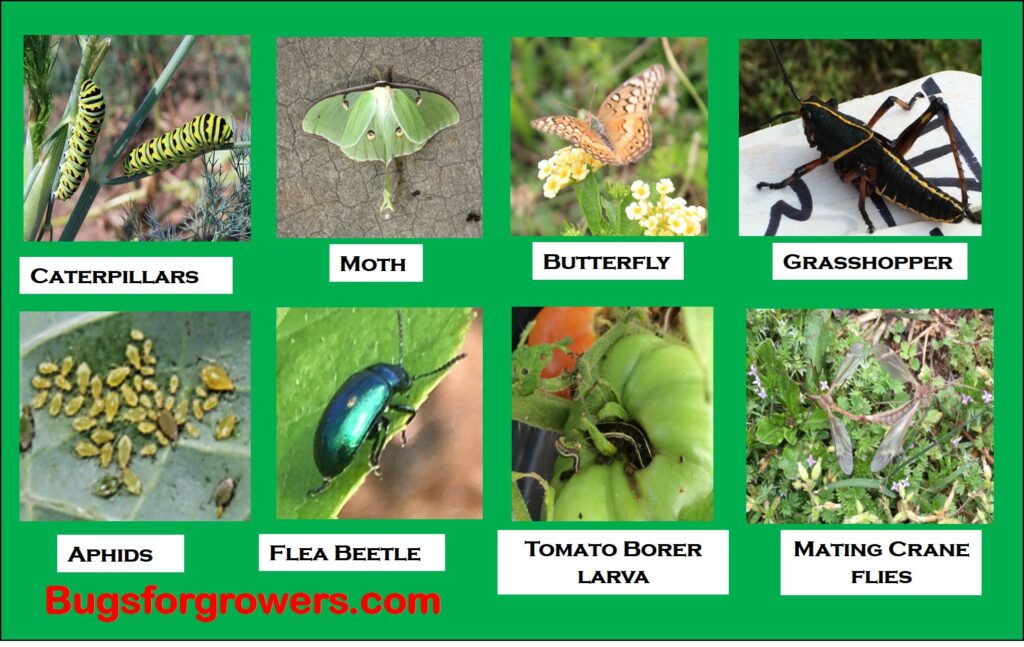
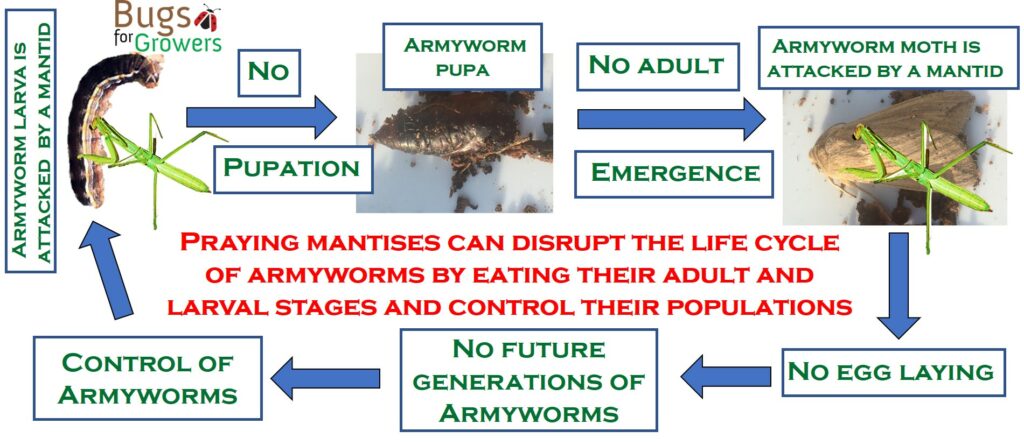
Disadvantages of Praying Mantises as Biological Control Agents
The main disadvantage is that the praying mantises do not discriminate between insect pests and beneficial insects when it comes to selecting their prey. For example, they can feed on economically important beneficial insect pollinators like honeybees, butterflies and moths that are important the production of many vegetable (Photo 7), cucurbit and fruit crops. Another disadvantage is that mantises can also capture, injure and feed on small tree frogs, lizards and spiders that are known to be natural enemies of many insect pests (Photo 7).
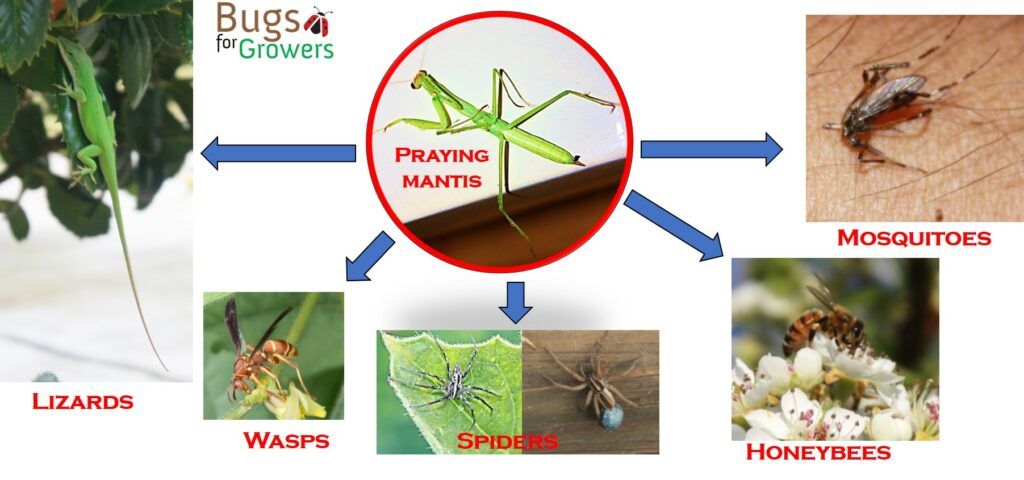
Optimum Rates and Timings for Mantises Applications
Praying mantises are generally sold as egg cases that can be randomly hanged in the bushes in the gardens mostly after the last frost early in the spring and then throughout the summer. Generally 3-4 egg cases per 5000 square feet area would be enough for the effective control of many insect pests in the organic gardens.
Each case contains about 400 eggs, which will hatch when temperature begins rising up early in the spring. Immediately after hatching, nymphs start looking for their prey. Nymphs generally eat small soft bodied insects such as aphids but as they grow old, they will start feeding on any big sized insect pests including beetles, butterflies, caterpillars, grasshoppers, moths etc (Photo 5).
